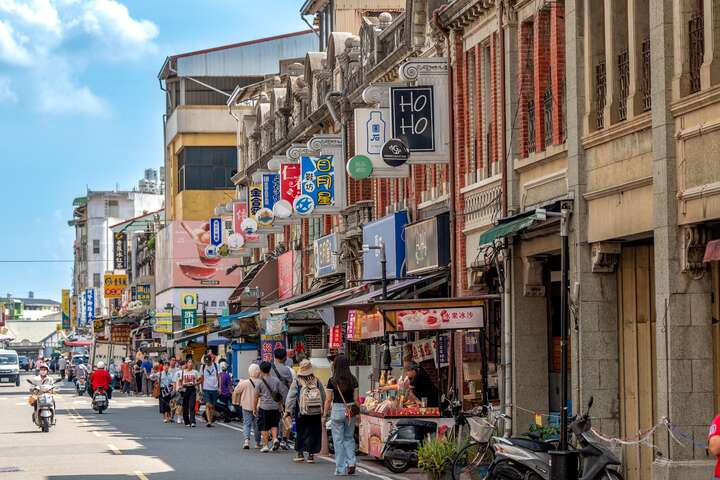Chishan Old Street Introduction
Qishan has been an important commercial hub in southern Taiwan since the Qing Dynasty, favored for its accessibility and abundant agricultural products, attracting many officials and merchants. During the Japanese colonial period, as the sugar and banana industries boomed, Qishan's economy flourished, and the urban landscape transformed. The economic prosperity brought by the sugar industry led to rapid development of local commercial districts and the construction of many uniquely styled buildings, making Qishan an economic center along the Kaohsiung Mountain Line. Most of the Baroque-style buildings on Qishan Old Street were built during the Japanese colonial era (around 1920 to 1930). Wealthy gentry introduced the Baroque style to comply with the "street improvement" plan, resulting in the construction of numerous red-brick Western-style houses along the streets. These buildings feature elegant facades and sandstone arcades, symbolizing the status and identity of affluent merchants. Additionally, traditional Min Nan courtyard houses and Japanese architectural styles can be seen on the old street, with a harmonious mix of structures from different eras, creating a historical and cultural stage. The scope of Qishan Old Street includes Zhongshan Road, Fuxing Street, and Huazhong Street, with its starting point at Qishan Station. During the Japanese colonial period, to develop the sugar industry, the "Qiqiao Line" sugar railway was built, with Qishan Station serving as an important transfer point. This station combines Victorian and Gothic architectural styles, featuring a wooden structure and an octagonal slanted roof, making it very distinctive. With the decline of the sugar industry, Qishan Station ceased to serve its transportation function and has now transformed into the Sugar Rail Story Museum, showcasing the history of Qishan's sugar industry and railways, becoming the best spot for travelers to learn about the local industrial culture. Address of Qishan Station (Sugar Rail Story Museum): No. 1, Zhongshan Road, Qishan District, Kaohsiung City Hours: Monday to Friday 10:00 AM – 6:00 PM, Saturday and Sunday 10:00 AM – 7:00 PM (closed on Tuesdays; ticket sales stop half an hour before closing) FB page: Qishan Station "Sugar Rail Story Museum" Historically, Qishan was a major production and sales center for bananas. In the 1950s and 1960s, large quantities of bananas were exported to Japan, bringing significant foreign exchange to Taiwan and solidifying Qishan's position in the international market. During this time, Wu Zhenrui, known as the "King of Qishan Bananas," served as the chairman of the Kaohsiung Fruit Cooperative but was falsely accused of bribing officials and imprisoned, a historical event referred to as the "Banana Incident". Wu Zhenrui became one of the victims during the White Terror period, and after being released from prison, he went into hiding in Japan, returning to Taiwan only after being exonerated. This incident also impacted Taiwan's status as the "Banana Kingdom," which was eventually replaced by the Philippines. Although Taiwan's banana industry is no longer thriving, Qishan still retains a rich banana culture, incorporating it into local delicacies. Strolling through the old street, one can find a variety of delicious dishes themed around bananas, such as banana egg rolls, ice cream, and cakes. These products are not only a source of pride for locals but also popular souvenirs for tourists visiting Qishan. Today, Qishan Old Street has transformed into a tourist district. In addition to historical buildings and industrial culture, many young people have chosen to return home to start businesses, opening dessert and specialty souvenir shops, creating a unique atmosphere that blends the old with the new. Whether wandering between red-brick Western-style houses, tasting banana delicacies, or exploring the history of sugar and railways, Qishan Old Street is a travel destination filled with stories and charm.
































